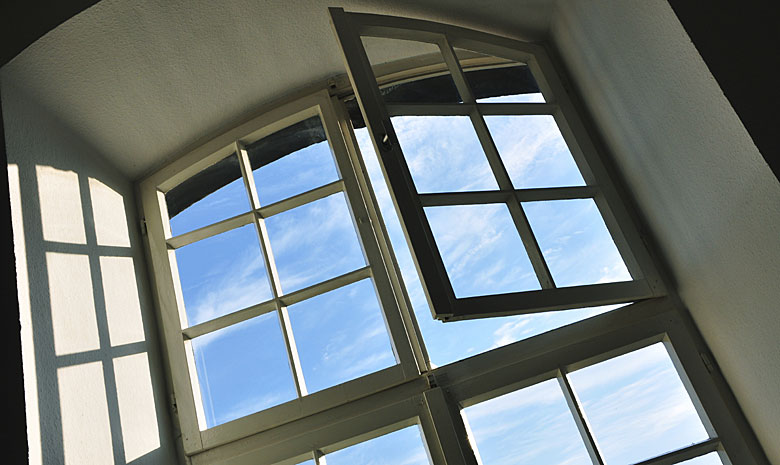Windows are one of the most fundamentally important features of any building, as vital as the walls, floor, roof and door. The perfect windows can not only add value and aesthetic appeal to a property, they can insulate and ventilate, controlling air flow as appropriate. That’s in addition to providing additional security and letting in sufficient natural light to keep the inhabitants suitably happy.
Consequently, there are many factors to consider when the time comes to do some replacement ‘window shopping’; it’s a decision that shouldn’t be made glibly. As such, here’s our simple guide to choosing windows for your home:
Pick your style
A window is a window is a window, right? Erm, not quite. While they largely perform the same myriad functions, there is a wide variety of different windows available. Step number one to selecting the right windows, is to consider the style which best suits your home.
Casement windows are those that are attached to the frame via hinges, typically flat and fairly common. They either open outward like doors or are hinged from the top, opening from the bottom like an awning. These might feature window stays or latches for security.
Elegant vertical sash windows open with an up-or downward sliding movement and are seen on older houses but can be reproduced using modern materials beautifully. These have seen a resurgence of late, where period television programmes like Downton Abbey have been influencing interior and exterior decoration.
A bay window protrudes out of the house, creating more room and allowing in more light. This style might be curved or square but remains a classic option. They can be secured using curved edge fastener locks, should a standard latch not fit. Dressing these windows doesn’t pose a problem, either – there are plenty of bay blinds and curtain poles available, so don’t be put off.
Perhaps a cottage window would better suit your home? These charming, multipane windows, criss-crossed with beams of wood or uPVC look perfect on quaint, thatched or older properties, but can work equally well on new-builds. Many are complemented with wrought-iron handles, such as the curling ‘monkey tails’, for that perfect finish.
Essentially, matching your home’s architectural style to the type of window is vital; it will prevent you making an incongruous error. Don’t forget to consider the internal effect as well as the external one – you’ll have to look at the windows for years to come.
Choose you materials
The majority of styles can be manufactured from a number of materials, each of which have their own benefits.
Timber frames – soft- and hardwood – are rustic and in-keeping with older properties, though the wooden option is not as popular as it once was, given the array of man-made alternatives like uPVC. Older timber frames require a fair amount of maintenance, but do look pretty, while new ones tend to be derived from sustainable sources, so may appeal to those with an environmental conscience.
Smooth, sleek and robust uPVC (unplasticised polyvinyl chloride) is a perennial favourite and the majority of new windows are constructed from this strong material. Aluminium frames, meanwhile, are strong and stylish. Although they offer one of the thinnest frame options available, they don’t tend to be used for residential purposes very often.
Composite windows might be a good option for those looking for style and strength, incorporating aluminium on the outside and beautiful timber on the inside. The two materials are totally integrated into one frame and thus work well with many different types of home.
Are they energy-efficient and eco-friendly?
There is a huge push these days towards limiting carbon emissions, while at the same time, householders are keen to reduce their heating bills too. Given that most property sales now include energy-efficiency checks, ensuring that your windows don’t leak hot air or fog up every morning is increasingly important.
Double-glazing is typically the way forward, as modern glass provides thermal protection and allows residents to reduce their energy consumption. Triple-glazing is fast emerging as a popular (though more expensive) choice for those that wish for a low-energy existence.
In terms of environmental friendliness, some people may believe that wood is the best option. However, don’t dismiss uPVC; many manufacturers are using recycled materials during construction to make this a more ‘green’ product.
Consider the cost
The price is naturally a big consideration, but it’s worth remembering that the outlay could save money in the long term through lowering heating bills and adding value. Going too cheap, therefore, could undermine the look and worth of a home.
uPVC and softwood options tend to sit at the more affordable end of the spectrum, although all bespoke designs will be priced differently, of course. Hardwood, composite and aluminium reside at the higher end.
Some companies might offer to refurbish your existing windows at a lower cost than full replacement, however this isn’t always an effective solution. The replacement parts may not fit quite perfectly with the existing frames and the resultant windows may not perform. Do some research before committing yourself and check out the variants in person.
As you can see, a window is definitely not ‘just a window’. There is a huge amount to take into consideration, hence it makes sense to arm yourself with as much information as possible. That way, you can choose windows that are absolutely perfect for your home.
Author: George Mitchell

